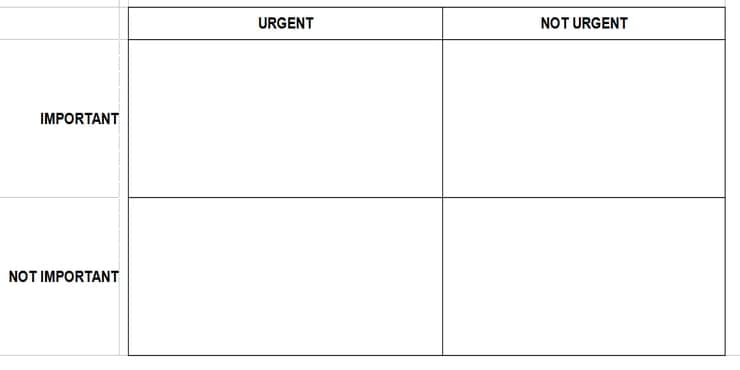Achieve Career Objectives: Align Daily Activities With Professional Goals

Estimated reading time: 9 Min
You’re about to find out how aligning your day-to-day tasks with your career objectives isn’t just about ticking boxes; it’s about living your life deliberately.
Here, I will explain the significance of goal and task alignment and its impact on your career.
You’ll discover that each task you complete can be a step towards your ultimate professional destination.
From the mundane to the complex, every step has its place in the bigger picture of your career.
This is about the “what,” the “how,” as well as the ”why”—why each task matters in the scope of your career vision.
As we dip into the nitty-gritty of professional goal setting, you should prepare to identify the wins—small and large—that can catapult you towards success.
Here, you’ll learn to align your personal direction with your career ambitions, ensuring that your daily efforts consistently propel you towards your goals.
Understanding Your Professional Journey
In my opinion, navigating your career is a lot like setting off on a voyage.
You need to know your destination and what you want to achieve, create a map, and have a compass, i.e., have a clear understanding of the steps to take. That’s what understanding your professional journey is all about.
First, assessing the current job market is crucial.
This is about identifying the “hot” industries, understanding which skills are in high demand, and spotting trends that could affect your career trajectory.
You’re going to find out about the importance of industry trends.
They’re like the trade winds that can propel your career forward. By keeping a finger on the pulse of technological advancements, regulatory changes, and economic shifts, you can predict where opportunities (or challenges) might arise.
I’ll be asking you to reflect on your personal strengths. Although that might seem like a detour, it’s an important step in exploring your options, making decisions, and living your choices.
Reflection will help you choose something that fits you, your passions, and your competencies.
It’s about knowing what you bring to the table and how that can both add value and use your competitive advantage in a crowded field.
Don’t worry about figuring this out overnight.
Career opportunities are constantly shifting, and staying adaptable is part of the learning experience. Now, transition seamlessly into setting clear and workable career objectives in the next section.
Setting Clear Career Objectives
I’m going to walk you through setting crystal-clear career goals.
Choosing something that resonates with you is essential because it’s going to serve as a north star, guiding your daily tasks and decisions.
The SMARTER framework is your best bet for setting career objectives that aren’t just whimsical but realistic and trackable.
Now, what is a big goal? It’s:
- “Specific”, which means it’s well-defined and clear;
- “Measurable”, so you can track your progress;
- “Achievable,” despite being a challenge and remaining attainable;
- “Relevant” by aligning with your broader career vision;
- “Time-bound,” in order to engender a sense of urgency;
- “Environmentally aware,” meaning that anyone else who relies on you gives you there support;
- “Resourced” means that you are willing to invest time, energy, and any other costs.
If you want to set career goals that are both aspirational and actionable, begin by laying out your long-term vision.
Imagine where you’d like to be in, say, five or ten years.
Then, zoom in from there, look back, and define what you need to achieve each year, then, in more detail, this year, this month, and even this week, to help define steps to take for steady progress.
And your first attempt doesn’t need to be your last—career goals should evolve as you grow professionally and personally.
So, don’t worry too much about getting them perfect on the first try.
Instead, allow yourself the flexibility to revisit and tweak them regularly.
That’s going to include being responsive to shifting job roles, market demands, and personal passions.
In my opinion, an important aspect overlooked when setting goals is planning for obstacles.
Analyse risks, anticipate challenges, and think about strategies to overcome them. This pro-active approach ensures you stay on route, even when the terrain gets rough.
With your “SMARTER” career objectives in place, you’ll take any bends seamlessly as you align your daily tasks.
That’s what I’m going to talk about next. This isn’t just about ticking off a to-do list; it’s about ensuring that each task is a planned stepping stone towards the greater end-goal of your career.
Aligning Daily Tasks With Long-Term Aspirations
You might be wondering how to make your day-to-day responsibilities work for you deliberately, rather than just filling up your time. This is, after all, what this article is about.
Each task needs to be chosen as a strategic step towards your bigger picture.
Let’s say you’re a project manager with a goal to become a senior leader in your field.
Your long-term aspiration could involve developing advanced leadership skills and strategic thinking.
To align with this, your daily tasks could include dedicating time to mentoring junior staff or leading a challenging project.
No matter what your profession is, breaking down your broad, long-term goals into smaller, manageable actions will make them less daunting and more achievable.
For instance, improving public speaking skills could start with presenting at team meetings before working up to larger conferences.
Such focused task alignment does not have to be a tedious process.
I recommend employing digital tools and apps designed for task management.
Apps like Trello, Asana, Notion (my favourite), or Monday.com can help you organise your tasks in alignment with your career trajectory.
But there’s more. It’s not just about having these tasks laid out; you also need to prioritise them effectively.
That’s going to include distinguishing between what’s urgent and what’s truly important for your career growth.
That’s precisely where the “Eisenhower Matrix” comes into play, acting as a powerful guide for your daily decisions.
Balancing Urgent and Important: The Eisenhower Matrix
I’m sure you’ve been in a situation where everything seems to be a top priority.
The Eisenhower Matrix is a simple yet powerful tool to help you prioritise tasks by urgency and importance, separating what needs your immediate attention from tasks that can wait.
The matrix is split into four quadrants:
- Urgent and Important
- Important but Not Urgent
- Urgent but Not Important
- Neither Urgent nor Important.

By categorising your tasks in this way, you’re going to find out exactly where your efforts should be concentrated to align with your career objectives.
Let’s say you’re a graphic designer with the goal of leading your team.
An ‘Urgent and Important’ task might be finalising a project proposal due today while learning a new design software—important for your growth but not pressing—will fall into ‘Important but Not Urgent’.
Answering routine emails? ‘Urgent but Not Important’.
As for browsing design blogs during work hours, place that in ‘Neither Urgent nor Important’.
Practically speaking, this matrix becomes a guide for your day-to-day decision-making.
It nudges you to focus on useful and quality work Instead of you getting bogged down by tasks that appear urgent but don’t necessarily serve your goals.
If you’re thinking this all sounds great in theory but wonder how it plays out in real life, don’t worry.
In the next section, we’ll explore how to leverage feedback and professional relationships, which will enhance your ability to effectively use tools like the Eisenhower Matrix and ensure you’re not just busy, but productive in ways that matter.
Leveraging Feedback and Professional Relationships
Now we take a look at leveraging feedback and nurturing professional relationships to keep your activities aligned with your career objectives.

Feedback is a powerful tool in your career alignment experience.
Think of it as a compass that keeps you headed in the direction of your long-term career goals.
It’s all about embracing constructive criticism from bosses, mentors, and peers and using it to refine your approach to tasks. And don’t worry too much about negative feedback; instead, view it as insight that could help you improve and pivot ever closer to your goals.
They’re the network that supports you, alerts you to new opportunities, and provides guidance.
It’s highly desirable to invest time in building and nurturing these connections.
Choose mentors who you trust and get along well with; engage with peers who share your professional values; and don’t shy away from reaching out to industry leaders you admire.
The balance between solo efforts and collective input can greatly influence how well your daily tasks serve your career progress.
While independence is important, collaboration often brings in fresh perspectives that help align your tasks more effectively with your objectives.
In my opinion, one of the smartest moves you can make is to actively seek out mentorship and collaborative projects.
Such experiences can be transformative, not just for task alignment but for overall career development.
So when you’re planning your next steps, remember to leave room for others’ input and for the growth that comes from working together with people who can teach you something new.
Continuous Learning and Skill Development
I’m going to let you in on a little secret: Continuous learning is the fuel that keeps your career engine running smoothly.
You can’t expect to meet your career objectives if you’re not constantly improving and adapting your skill set to the ever-evolving professional environment.
Immersing yourself in fresh knowledge and mastering new skills is essential for staying relevant, and it’s also about making yourself indispensable in a competitive job market.
Plus, it shows potential employers that you’re driven and able to take initiative—qualities that speak volumes.
That isn’t to say you need to spend every waking hour with your nose in a book or your eyes glued to a tutorial.
Choose something that makes sense to you and that fits with your current career phase or the direction in which you want to go.
From online courses and webinars to podcasts and rotating through different job roles, there are numerous ways to approach continuous learning.
In my opinion, the trick is to make learning part of your daily routine.
If you want, for example, to enhance your digital marketing skills, perhaps you could dedicate at least 30 minutes a day to reading industry blogs or practicing SEO strategies.
Over time, these nuggets of learning accumulate into a wealth of knowledge that can catapult your career to new heights.
Don’t worry too much about immediate perfection or expertise.
Just don’t focus too much on perfection—your first attempt doesn’t need to be your last.
After all, learning is a journey, not a destination. The goal is to make steady progress and adjust your approach as you go.
Summary
If you think of your career as a vessel on a vast ocean, then your tasks are the individual strokes of an oar propelling you forward.
Just like a ship needs to maintain a direct course to reach its destination, aligning your tasks with your professional objectives ensures you stay on the path to career development and fulfilment.
But your journey isn’t just about the speed of progression; it’s equally about the quality of the voyage.
That’s where work-life harmony comes in. It’s essential to strike a balance that fosters both professional growth and personal well-being.
Overworking might get you there faster, but it risks burning you out before you ever see the fruits of your labour and often risks personal relationships.
To maintain this delicate balance, prioritise tasks that push you closer to your goals while also scheduling in time for rest, hobbies, and time with loved ones.
Choose something that feels right to you and nurtures your professional aspirations without neglecting your personal needs.
Remember, aligning tasks with your career objectives isn’t a one-time effort; it’s a continuous process that requires you to adapt, learn, and sometimes change directions.
As you mark up your daily wins and conquer milestones, take a moment to reflect on your accomplishments; that means looking back and reflecting a little. Use these as a springboard to recalibrate and re-energize your commitment to your professional journey.
As we come to the end of our discussion, I encourage you to determine how you can benefit from the ongoing pursuit of alignment in your professional life. You’ve got the insights, strategies, and tools needed to find your way deliberately.
It’s all about taking those insights and putting them into action—consistently, mindfully, and with an eye on the horizon of your career aspirations.
Here’s to setting sail on the seas of success, steering your career with precision and care, and enjoying every moment of the voyage.
Remember, you’re the captain of your ship—make it a voyage to remember!
And remember to share and comment!
🙂
Richard






